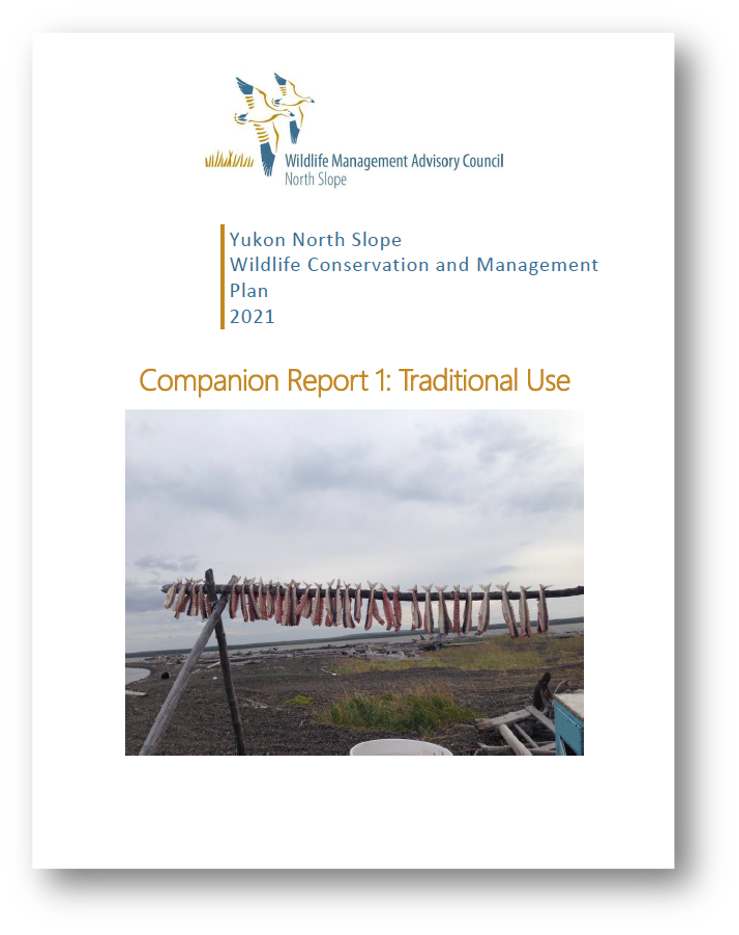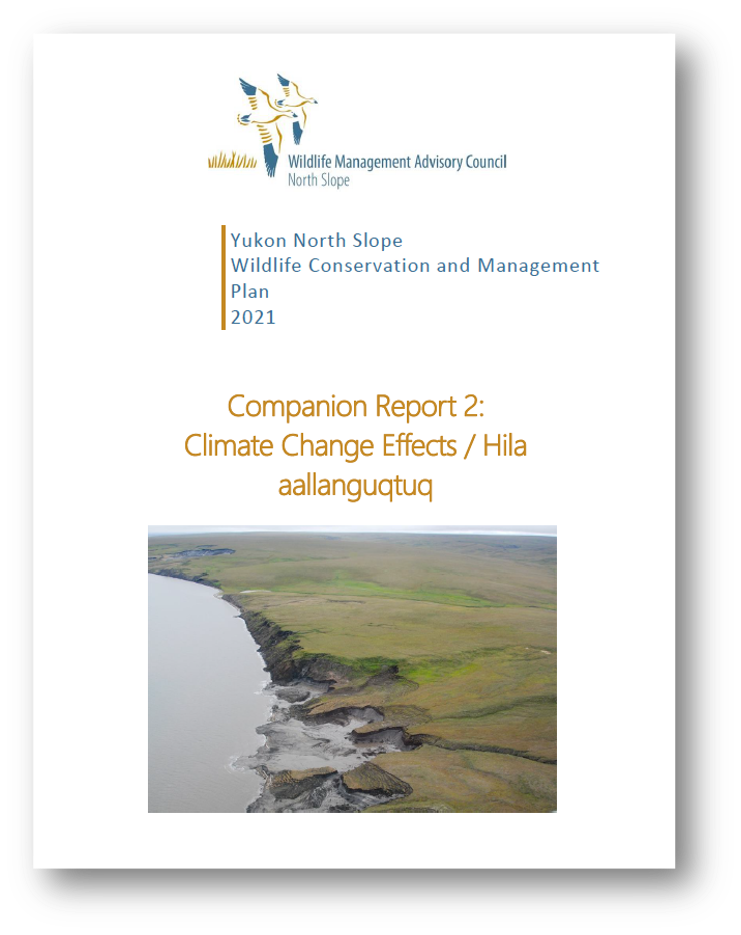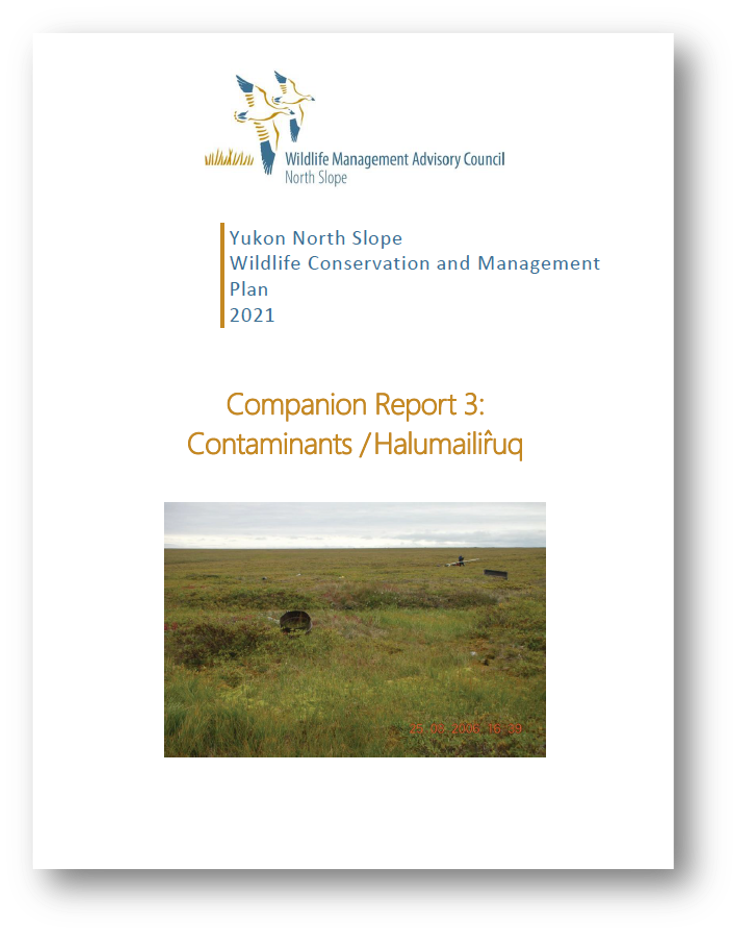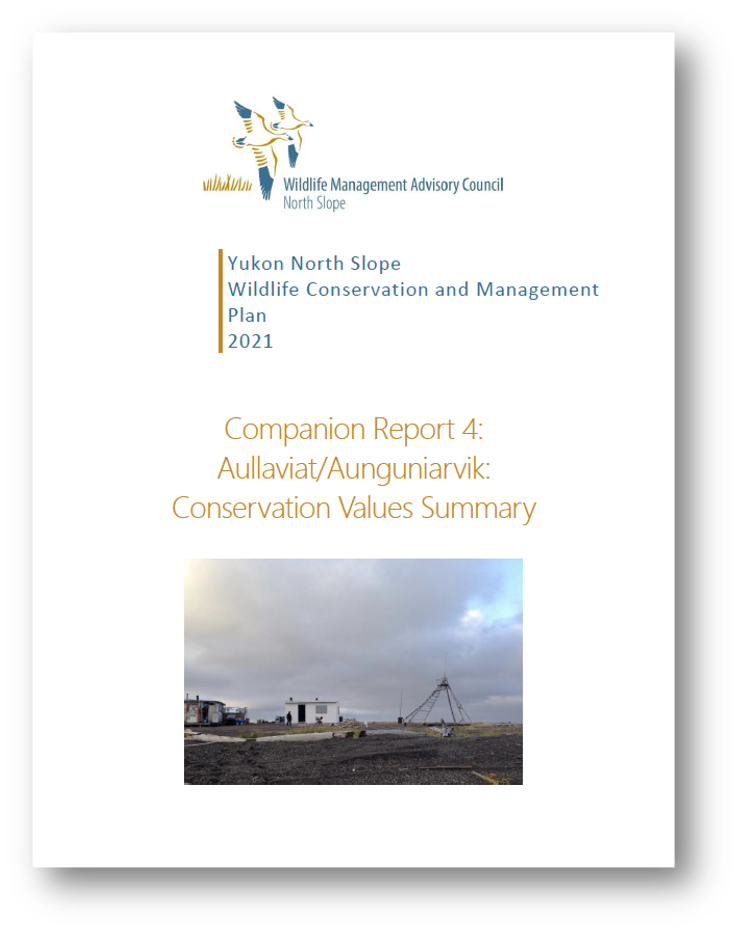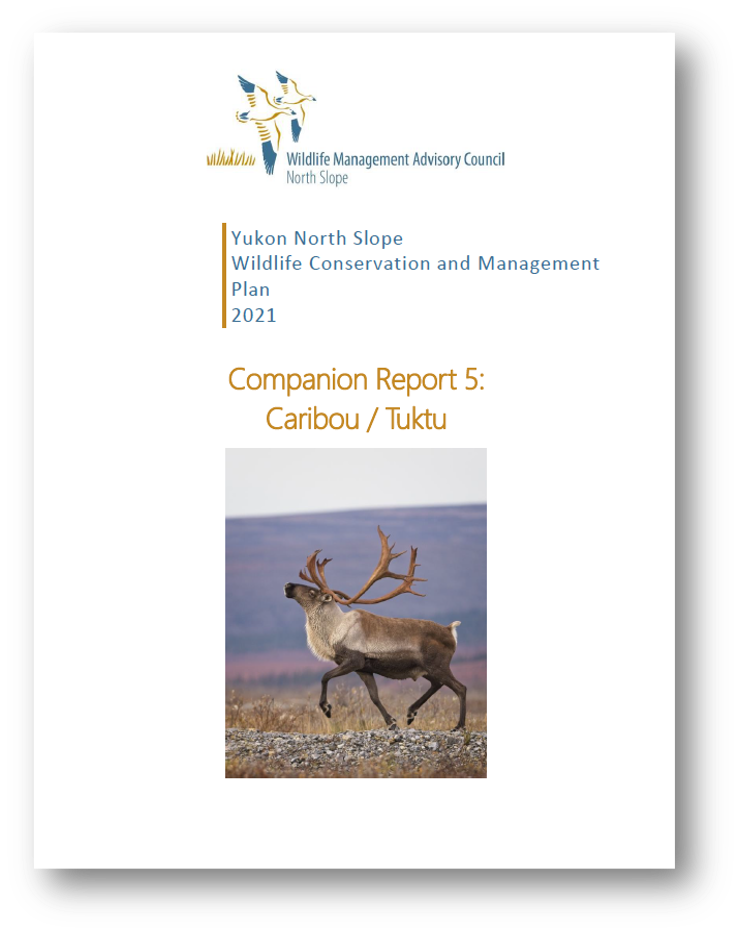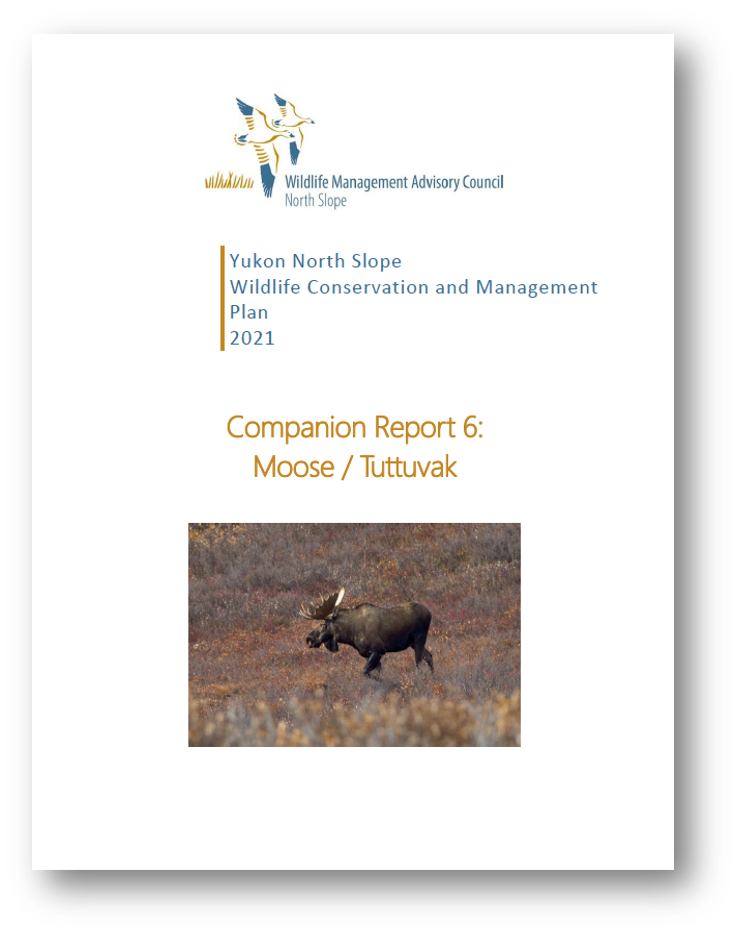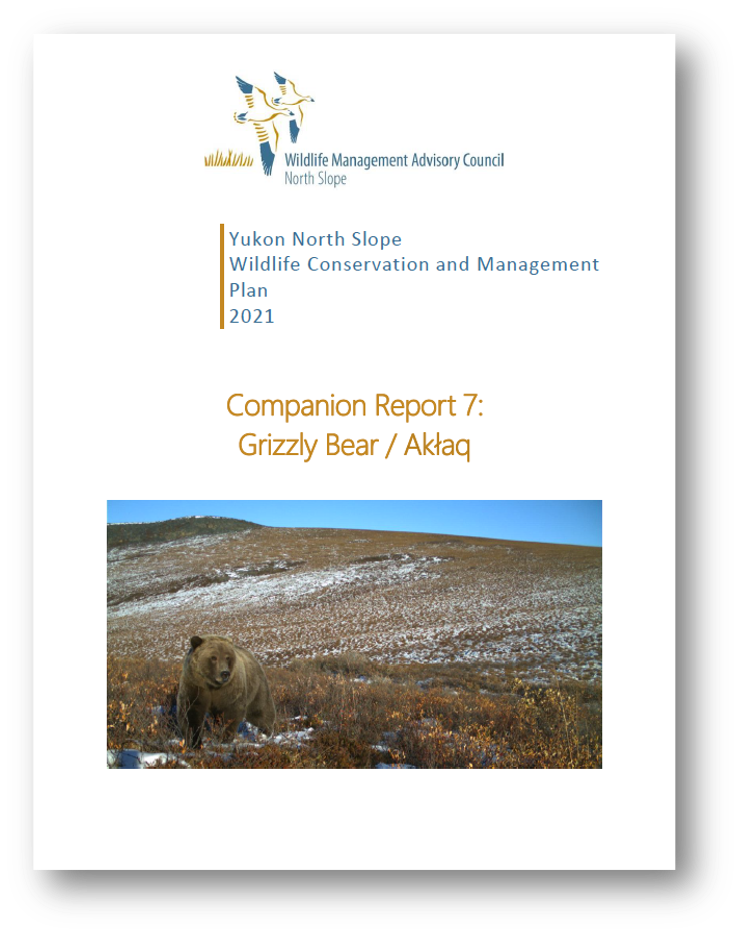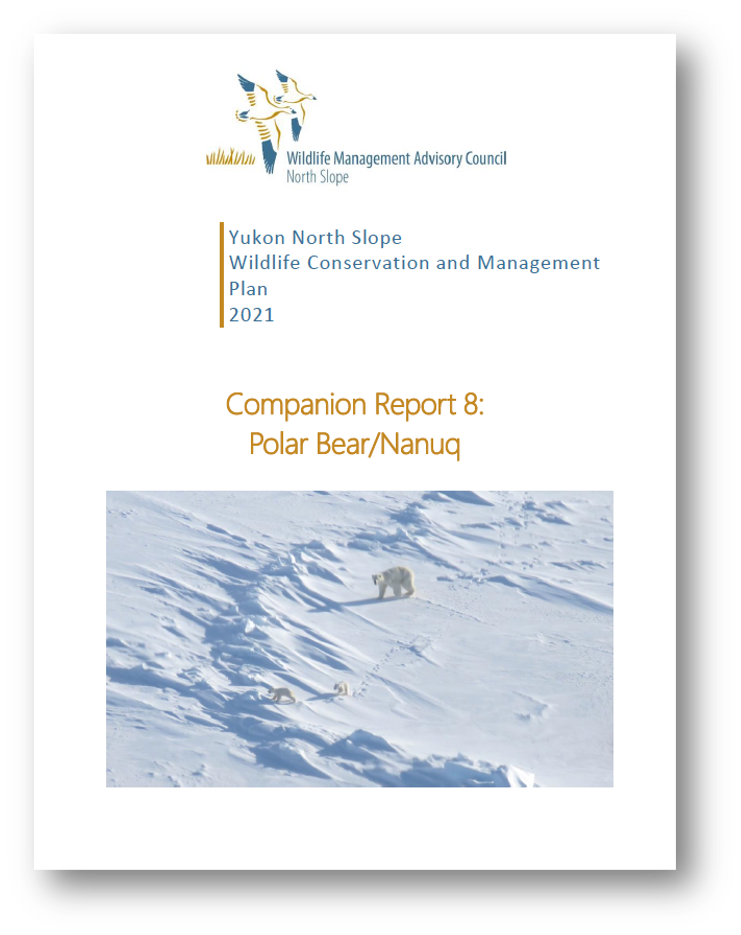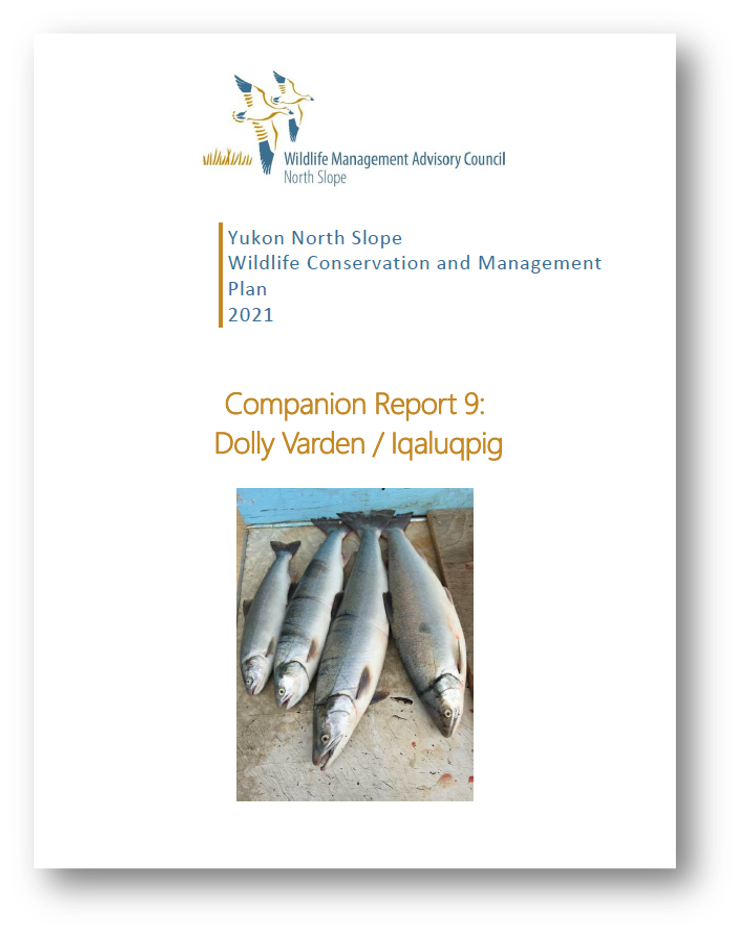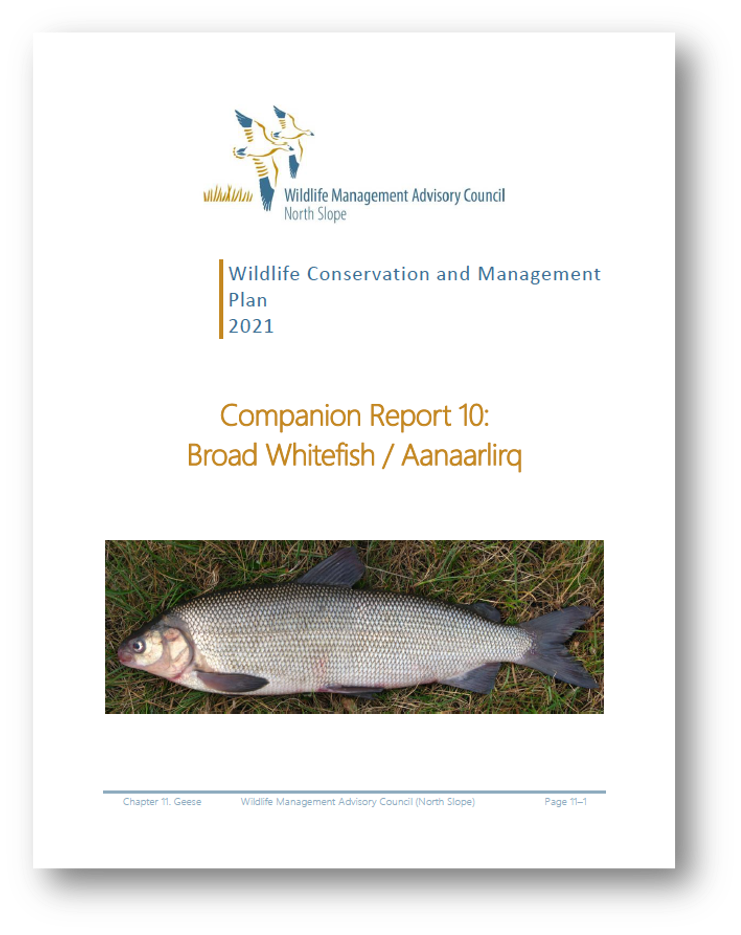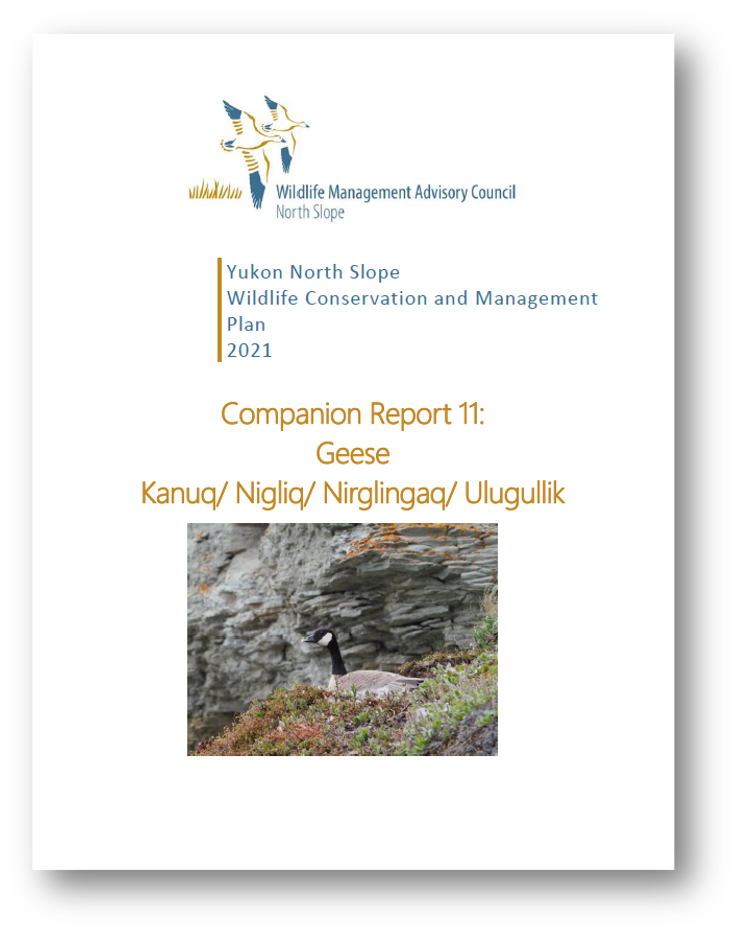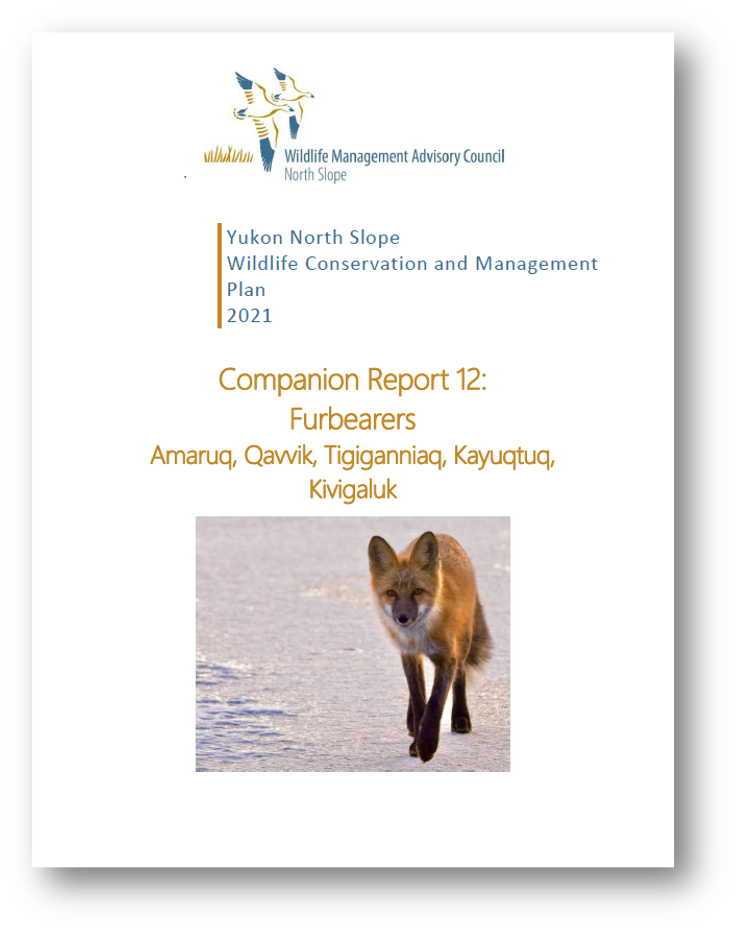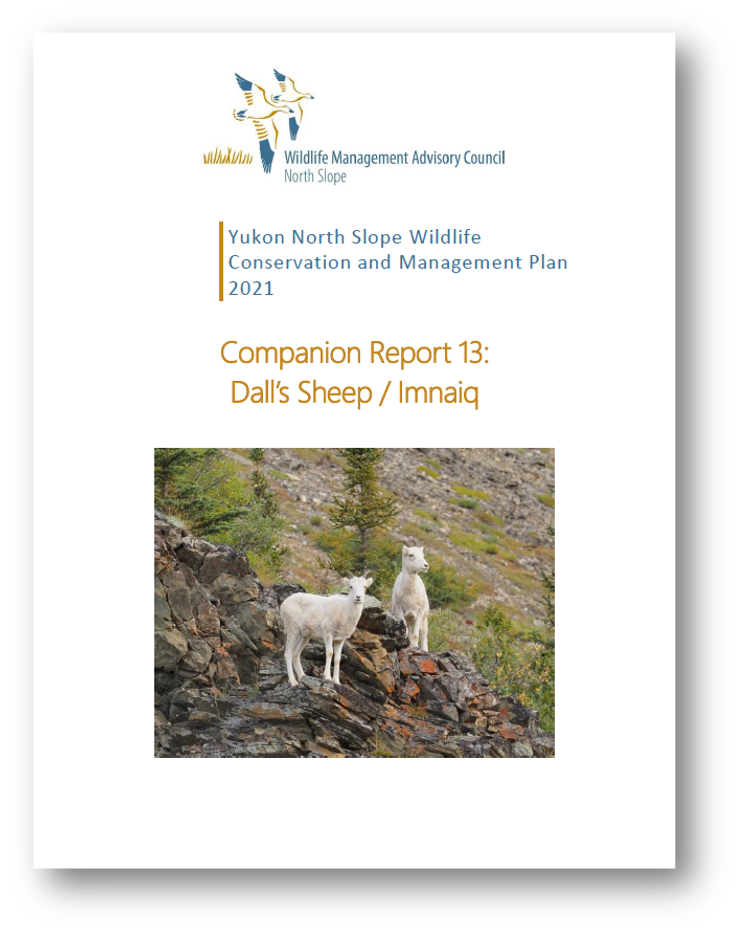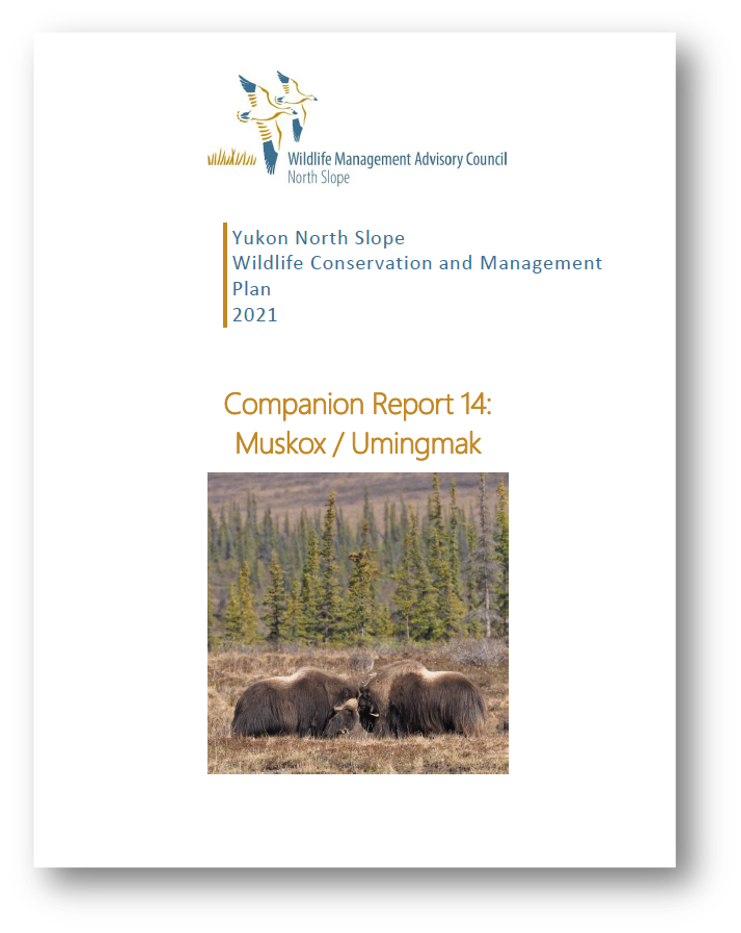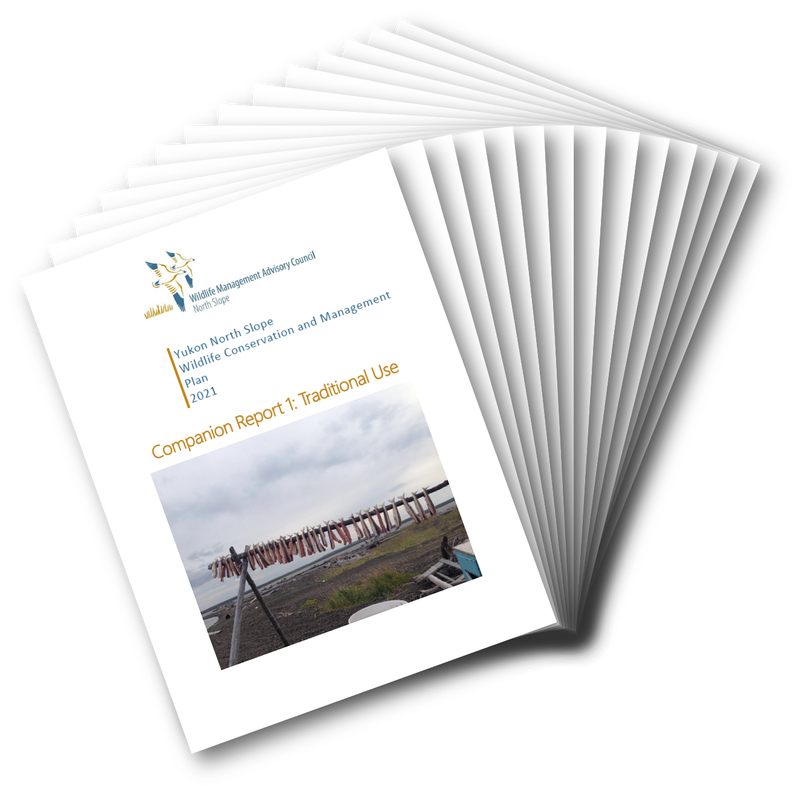Companion Reports to the Wildlife Conservation and Management Plan
The Companion Reports to the Yukon North Slope Wildlife
Conservation and Management Plan give a detailed look at the
evidence that underpins the Plan. This evidence includes over a decade of studies and draws from Inuvialuit
knowledge and science. The Companion Reports summarize this body of knowledge and provide additional information to support the implementation of the Plan's Objectives, Strategies and Priorities.
There are fourteen Companion Reports. Each Report focuses on a select topic of interest or key wildlife species featured in the Plan. The wildlife species selected are recognized for their cultural or economic importance, similar habitat needs to other species, and essential role in the Yukon North Slope ecosystem. The Companion Reports feature additional maps, detailed information, highlights from key studies, and links to collaborative efforts that are already in place to support the health of the Yukon North Slope.

